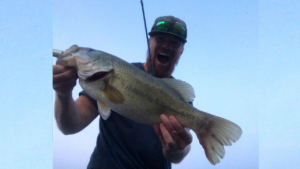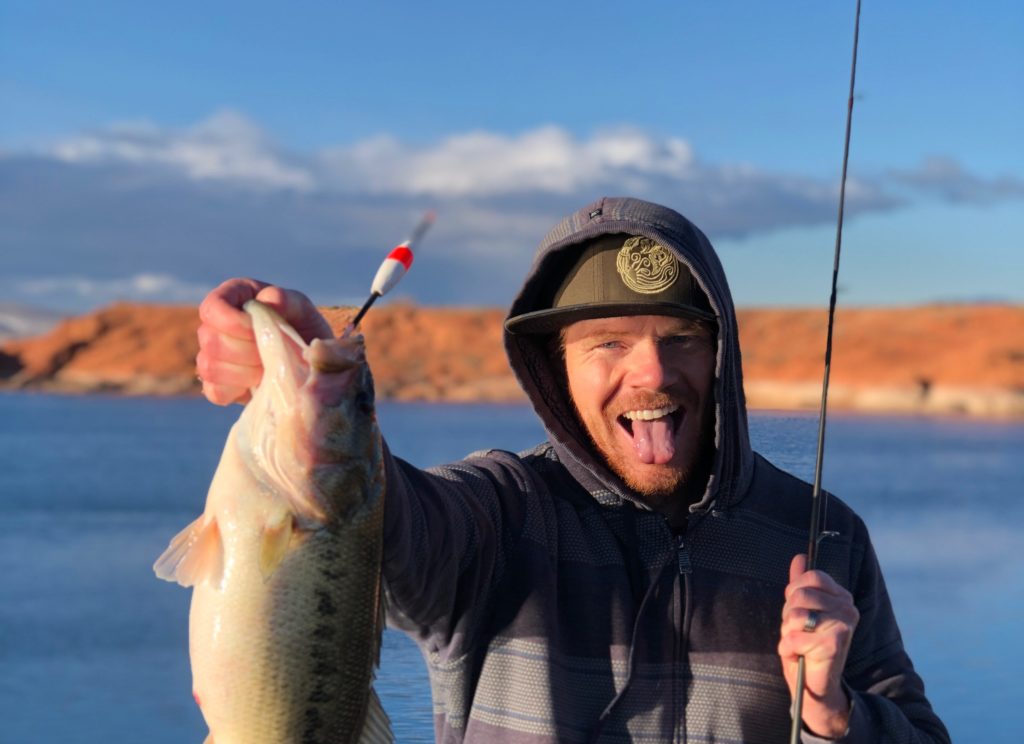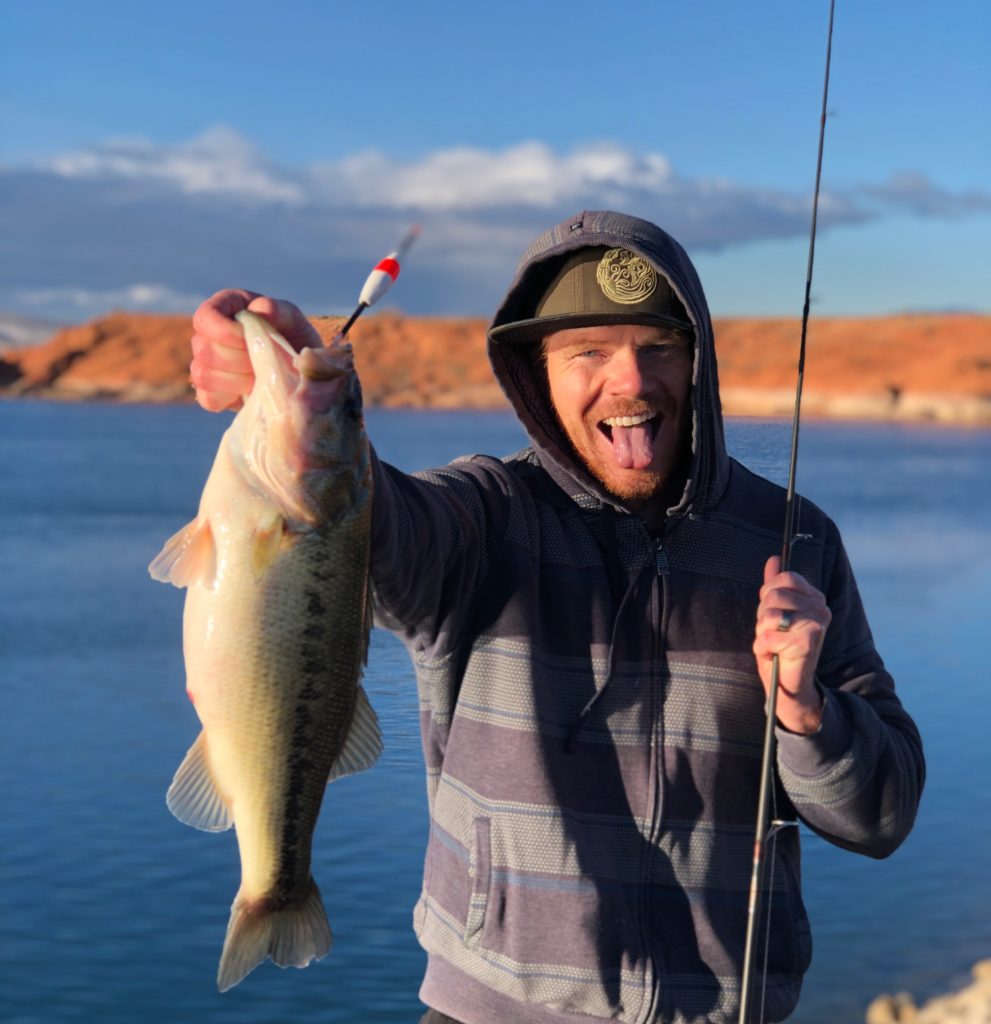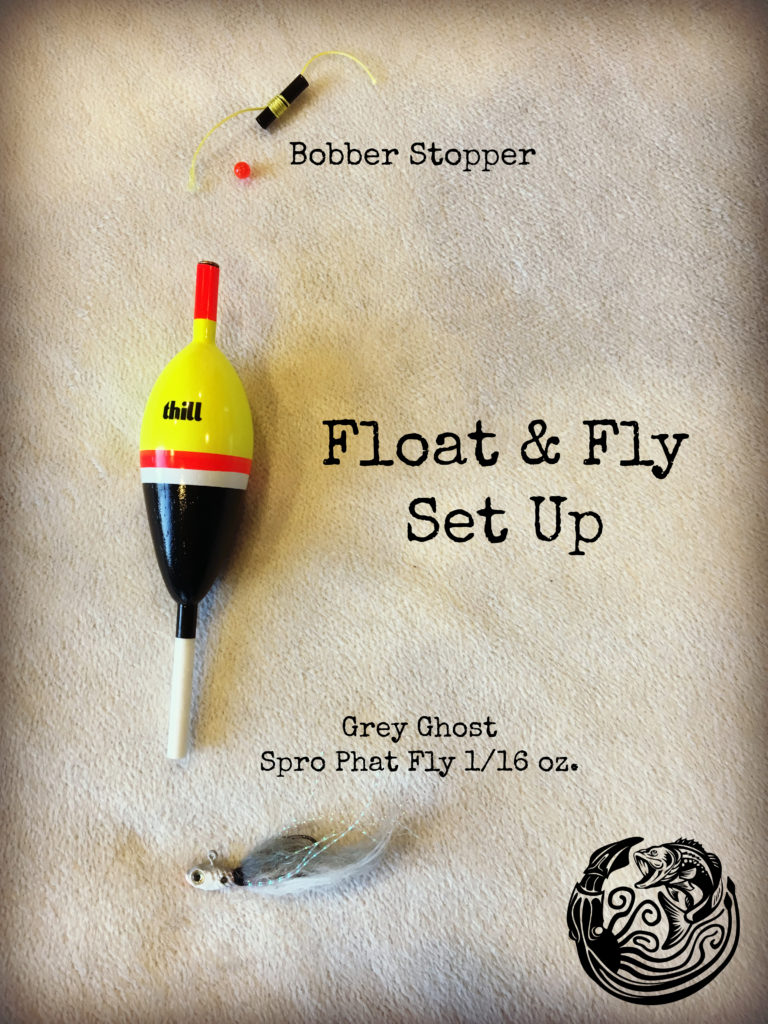

The first time I heard about the float and fly I asked myself, “what is float and fly fishing all about?” After several years of experimenting with the technique, I can honestly say it is one of my favorite ways to catch bass. Whatever it is about the float and fly bass really seem to dig it. Here in this article we will do a deep dive into what is float and fly fishing. This post includes how to set the float n fly up for optimal results, when it can work well, and the best tackle to use for the float and fly. Get Stoked!
The float and fly fishing concept is really quite brilliant. It’s a way to keep your bait suspended at any depth in the water column. You use a slip bobber along with a bobber stop to get your fly at the exact depth you want it to suspend. Plus, this technique allows you to cast away from your boat or the shore, so you can reach out to bass without having to sit on top of them with your boat. There are very few techniques that allow for such a finesse presentation at exactly the right depth you want. In addition, bass including largemouth and smallmouth really seem to dig it. Honestly, for me I’ve seen much greater success with largemouth on this set up than smallmouth for some reason. You might want to keep that in mind as you fish the float n fly technique.
You can catch bass in really cold water well with the float and fly, even though it works throughout the year. Here’s a look at how to set up a float n fly, logistics of how and when to use the technique, and some of the best tackle you need for bass fishing this way.

If you search google for float and fly, you will find all sorts of different ways to rig it up. Some will tell you to you need your float tied to the line, and you add a long leader. The problem with that method is it is really hard to cast. Here is the set up to provide optimal casting distance and have more flexibility for depth on your fly. You want to use a heavier unweighted float, and some line tie bobber stoppers. Trust me I’ve tried them all, and this one will get you winning some tournaments in the early part of the year. Here’s a picture of what this rigging set up looks like.

Here’s some of the reasons why this float and fly rigging works better than the others you’ll read about online. First, this set up is meant to be used with a spinning rod & reel. A spinning setup is important. This will enable you to literally reel the bobber stopper through the large eyes of a spinning reel. Those small line tie bobber stoppers, once the tags are trimmed off, are extremely small and won’t inhibit your casting much. I’ve measured out 30 feet of leader for my fly, and just reeled the knot up into my spinning rod. This leaves the bobber, the float, and the bead for you to cast out to the spot those bass are suspended. It’s pretty magic to be able to still cast, and put your fly precisely at those depths the bass are holding.
To help you understand a little better. Make sure you check out the video embedded below in the post from YouTube.
Here’s a few things to consider on how to fish a float and fly better. Make sure you can identify the depth the bass are holding. Once, you’ve got an idea of what depth the bass are at, measure your leader, and place your fly only about 6 – 12 inches above the desired depth. You want the bass to pull down on your fly, so you can notice the strikes better on your float. This will also help your hook ups.
Another important thing is to understand what your float is telling you about your fly. With a pencil float you want the float to be straight up and down. This indicates your fly is suspended directly beneath the float right where you want it. When your float is laying flat or horizontal on the water it is doing one of three things. Either your fly is on the bottom, your fly is still sinking to the desired depth, or you’ve got a bass on! Watch that float close. You don’t feel the bites. You see the bites. Sometimes it will just be a little jump of vibration from your float while sitting still. Keep your eyes peeled to keep it kraken.
The right tackle will make a big difference for your success with catching bass on a float & fly. Here’s a bullet-ed list with click through links for the type of line, rod, reel, float, etc… to get you started off right. I struggled to find the right tackle for this set up for a few years. Hopefully, this list will help you if you want to start fishing the float and fly technique.
For those of you who are more visual learners. Here’s a video of how to rig up a float n fly as described in this post. Plus, this video includes some footage of the float and fly in action. Hopefully, it will give you a better idea of how this set up can work for bass fishing. Don’t forget to subscribe to my YouTube channel so you can get notified of any new videos I post to help you catch more fish. Enjoy!
One last thing. The links above and below in this post are affiliate links were you can pick up baits, rod’s, reels, line, and anything else I use to “Krak” some bass on the float and fly. Krakenbass receives a small percentage of the sales through these links. I only use links to baits, and gear I personally trust and know work. These links are supposed to be helpful for you, and not for the small amount I make for the sale of the products. I hope these products can help you “krak” some bass like they have for me. Thank you for your support!
As Always,
Stay Stoked!
You need a system to know where to go, what to use and how to work your lures to catch more bass in every situation.
Use this lure color selection chart and perfectly match the color of your lure to what bass are wired to eat without trial and error so you can catch the monsters!
Discover how to perfectly match the color of your lure to what bass are wired to eat so you can catch the monsters!
One Response